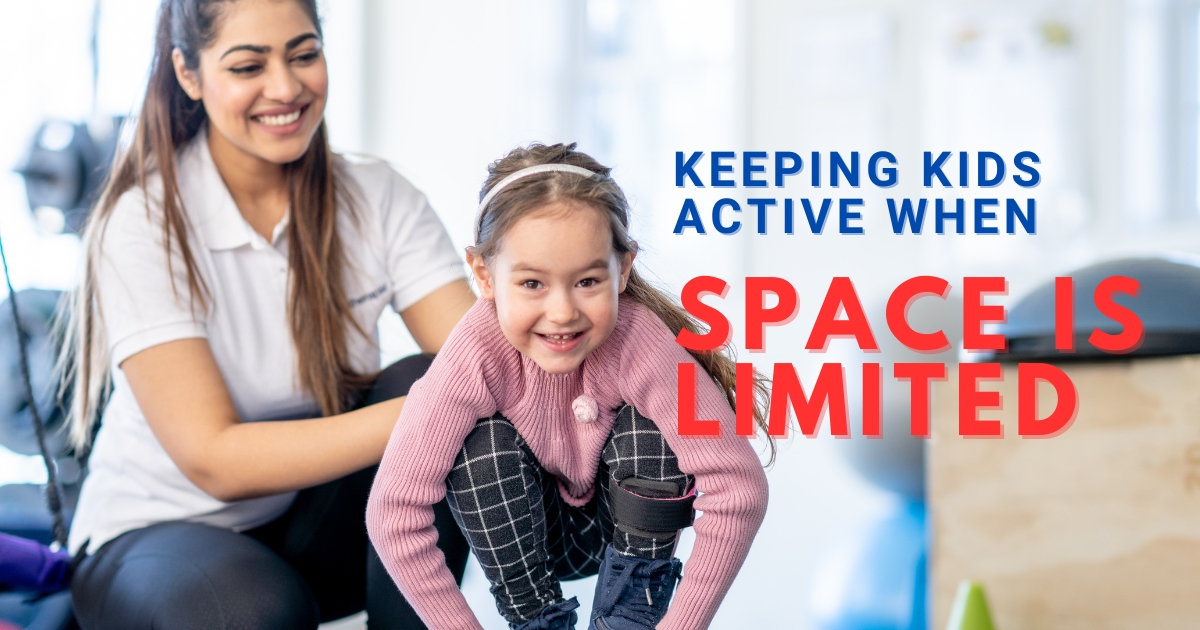When it comes to homeschooling, one of the biggest challenges parents face is how to keep kids active. With limited space and often restricted access to outdoor facilities, ensuring your kids get the recommended amount of exercise can feel like an uphill battle. However, physical education is a crucial part of a balanced homeschooling curriculum. It not only helps in the physical development of your child but also fosters mental well-being, concentration, and overall happiness.
This blog post will guide you through a variety of creative indoor PE activities that will keep your children engaged and active, even when you don’t have much space to work with. From household obstacle courses to dance games and yoga sessions, we’ve got you covered. By the end of this post, you’ll be equipped with actionable ideas to transform your home into an exciting and energetic PE class.
Creating Obstacle Courses With Household Items
One of the easiest and most engaging ways to incorporate physical education into your homeschooling routine is by setting up indoor obstacle courses. These can be created using everyday household items like chairs, pillows, and laundry baskets. The idea is to design a course that your child can maneuver through by jumping, crawling, and balancing, making sure to incorporate a mix of physical challenges to keep things interesting. Not only does this activity promote physical fitness, but it also enhances problem-solving skills and creativity as your child figures out how to best tackle each obstacle. You can change up the course regularly to keep the activity fresh and exciting, ensuring that your children look forward to their homeschool physical education sessions.
Setting up an obstacle course is a great way to utilize available space efficiently. Start by designating an area in your home where the course will be set up. Make sure it’s safe and free from any sharp objects that could cause injury. Next, gather items that can be used as obstacles. Chairs can serve as tunnels to crawl under, pillows can be lily pads to jump between, and laundry baskets can be targets for throwing softballs. Arrange these items to create a path that your child must follow, incorporating a variety of movements such as jumping, crawling, and balancing to make the course physically challenging and fun. You can further incorporate educational elements into the course by placing flashcards or small puzzles at different stations, requiring your child to solve them before moving on to the next obstacle. This way, you are not only focusing on their physical well-being but also stimulating their cognitive abilities.
To make the obstacle course even more engaging, involve your children in the planning and setup process. This not only makes them more excited about participating but also teaches them valuable skills like planning and organizing. Encourage them to come up with their own obstacle ideas and incorporate them into the course. Once the course is set up, time your children as they complete it and encourage them to try and beat their previous times. This introduces a fun, competitive element that can motivate them to push themselves harder. Remember to change up the course regularly to keep things interesting and to introduce new physical challenges. By incorporating obstacle courses into your homeschooling routine, you can ensure that your children stay active and engaged, even when space is limited.
Dance And Movement Games
Another fantastic way to keep your homeschooling children active is through dance and movement games. Dancing is not only a fun and enjoyable activity, but it also provides a great cardiovascular workout, improves flexibility, and enhances coordination. You can easily integrate dance into your homeschool physical education curriculum with various dance games and activities. One popular option is to use dance-based video games or apps, which provide guided dance routines that your children can follow along with. These games are designed to be both entertaining and physically challenging, ensuring that your children get a good workout while having fun. Alternatively, you can create your own dance games by playing music and encouraging your children to come up with their own dance moves. This promotes creativity and self-expression, making physical education a more enjoyable and personalized experience.
In addition to dance games, you can also incorporate movement-based activities that get your children up and moving. One idea is to play a game of musical chairs, where your children have to walk or dance around a circle of chairs while music plays. When the music stops, they must quickly find a chair to sit in, and the last person standing is out. This game not only gets them moving but also encourages quick thinking and reaction times. Another fun movement game is “Simon Says,” where one person gives commands like “Simon says jump” or “Simon says spin around,” and the others must follow these commands only if they are preceded by “Simon says.” This game is great for improving listening skills and coordination, and it can be easily adapted for different age groups and fitness levels.
To keep things fresh, try incorporating themed dance and movement games based on your child’s interests. For example, if your child loves animals, you can play a game where they have to mimic the movements of different animals, such as hopping like a frog or slithering like a snake. This adds an imaginative element to the activity and keeps your child engaged and excited. You can also create a dance routine based on their favorite songs or movie characters, making the activity more personalized and enjoyable. By incorporating dance and movement games into your homeschooling routine, you can ensure that your children stay active and engaged while also having fun and expressing themselves creatively.
Yoga Sessions Tailored For Kids
Yoga is an excellent addition to any homeschool physical education program, as it promotes physical fitness, flexibility, and mindfulness. Tailoring yoga sessions for kids can make the practice more engaging and accessible, ensuring that your children look forward to their yoga time. Start by creating a designated space for yoga in your home, such as a quiet corner with a comfortable mat or a soft carpet. Having a consistent space for yoga helps create a routine and makes it easier for your children to focus and relax.

When introducing yoga to your children, choose poses that are simple and fun. Animal-themed poses, such as downward dog, cat-cow, and cobra, are particularly appealing to kids and make the practice more enjoyable. You can also incorporate storytelling into your yoga sessions by creating a narrative that involves different poses. For example, you can tell a story about a jungle adventure where your children have to perform different animal poses as they encounter various creatures. This adds an imaginative element to the practice and keeps your children engaged and excited about yoga.
In addition to physical benefits, yoga also promotes mindfulness and relaxation, which are essential for overall well-being. Encourage your children to focus on their breath and practice deep breathing exercises during their yoga sessions. This helps them develop mindfulness and reduce stress, making them more focused and calm throughout the day. You can also introduce guided meditations or relaxation exercises at the end of the yoga session, helping your children wind down and relax. By incorporating yoga into your homeschooling routine, you can ensure that your children stay active, flexible, and mindful, even when space is limited.
Interactive Video Workouts
In today’s digital age, there are countless resources available online that can help you keep your homeschooling children active. Interactive video workouts are a fantastic way to incorporate physical education into your homeschooling routine, as they provide guided exercises that your children can follow along with. These videos are designed to be engaging and entertaining, ensuring that your children stay motivated and excited about their workouts. Whether it’s a high-energy dance workout, a fun aerobics session, or a kid-friendly yoga routine, there are plenty of options to choose from that cater to different interests and fitness levels.
When selecting interactive video workouts for your children, choose those that are specifically designed for kids. These videos often feature colorful graphics, upbeat music, and enthusiastic instructors that make the workouts more enjoyable and accessible. You can find a wide variety of kid-friendly workout videos on platforms like YouTube, where channels like Cosmic Kids Yoga and GoNoodle offer fun and engaging exercises that are perfect for homeschooling children. By incorporating these video workouts into your homeschool physical education curriculum, you can ensure that your children stay active and healthy while also having fun.
In addition to following along with video workouts, you can also create your own interactive exercise routines by incorporating elements from different videos. For example, you can start with a warm-up from one video, followed by a dance routine from another, and finish with a cool-down yoga session. This allows you to customize the workout to suit your children’s interests and fitness levels, making it a more personalized and enjoyable experience. You can also involve your children in the planning process, encouraging them to choose their favorite videos and exercises. This not only makes them more excited about the workouts but also teaches them valuable skills like planning and organization.
To keep things fresh and exciting, try incorporating themed video workouts based on your child’s interests. For example, you can create a superhero-themed workout where your children have to perform exercises that mimic the movements of their favorite superheroes. This adds an imaginative element to the activity and keeps your children engaged and motivated. By incorporating interactive video workouts into your homeschooling routine, you can ensure that your children stay active, healthy, and entertained, even when space is limited.
Keeping your homeschooling children active and engaged can be a challenge, especially when space is limited. However, with a little creativity and planning, you can incorporate a variety of fun and engaging indoor physical activities into your homeschool physical education curriculum. From household obstacle courses and dance games to yoga sessions and interactive video workouts, there are plenty of options to choose from that cater to different interests and fitness levels.
By incorporating these activities into your homeschooling routine, you can ensure that your children stay active, healthy, and happy while also having fun and learning new skills. If you’re looking for more ideas and resources, don’t hesitate to explore online platforms and communities that offer valuable insights and tips for homeschooling parents. Together, we can create a fulfilling and well-rounded homeschooling experience that nurtures both the mind and the body.




